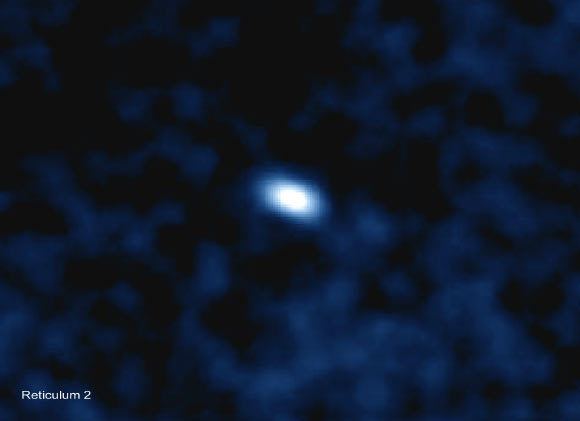Right ascension 03 35 42.14 Apparent size (V) 3.37′ × 3.64′ Apparent magnitude (V) 17.4 | Declination -54° 2′ 57.1″ Magnitude 17.4 | |
 | ||
Distance (comoving) 30 ± 2 kpc (97.8 ± 6.5 kly) Distance 97.8 ± 6.5 kly (30 ± 2 kpc) Similar Triangulum II, Segue 1, Ursa Major II Dwarf, Leo IV, Hercules | ||
Reticulum II (or Reticulum 2) is an old dwarf galaxy in the Local Group. Reticulum II was discovered in 2015 by analysing images from the Dark Energy Survey. It is elongated, having an axis ratio of 0.6. The size is given by an half-light radius of 15 pc. This is too large for it to be a globular cluster. Magnitude Mv of the galaxy is -2.7. The distance from Earth is 30 kpc. The galaxy contains some blue horizontal branch stars. Other features visible are a main sequence, and a main sequence turn off, and a red giant branch. It has an unusual enhancement of r-process elements; meaning that gold and europium are extra common in the brightest stars in the galaxy. The implication of the unusual enrichment in elements heavier than zinc, is that the r-process is very rare, and only happened once in this galaxy, possibly by the collision of two neutron stars.
Gamma rays mostly with energies between 2 and 10 GeV have been detected by the Fermi satellite. The radiation from Reticulum II is more significant that other dwarf galaxy emissions. However this finding has been contested.
